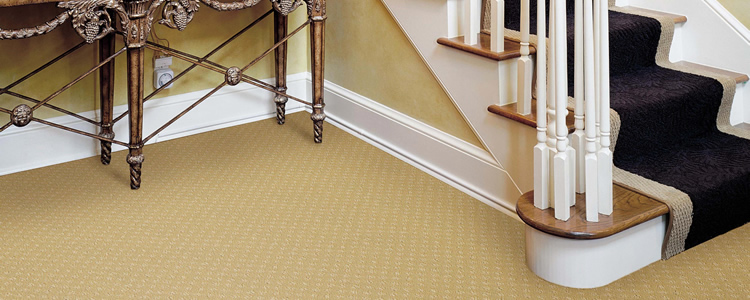
Frequently Asked Questions
This type of soiling is difficult to remove because the soil particles are so fine that they penetrate deep into the carpet pile, sometimes into the backing of the carpet. Can it be removed? Sometimes. With special products, time and effort, reasonable results can sometimes be achieved. To help prevent filtration soiling, vacuum and wipe the edges of the carpeting on a regular basis. Be careful around the tackstrip on the edge of the carpeting, it could nick your fingers!
The only reason we can make such an offer is because we believe in our service. Our equipment is unique, and our processes are unsurpassable. Additionally, we select only the type of personnel you yourself would invite into your home or business, and train them to be experts in their field. so relax; we gladly accept responsibility for your furnishings when we are your guest.
Our priority is to serve you well ALWAYS!
To most people "dry cleaning" means cleaning without water. The fact is that most carpet cleaning advertised as "dry" cleaning actually uses anywhere from a little to a lot of water! That's because most of the soil in your carpet is water soluble. For the most part that means better results with a wet cleaning process. On the other hand each cleaning process has its place given the circumstances. For the majority of residential customers steam cleaning will deliver the most effective results.
At Janssen's we offer most of the industry standard cleaning processes. Each process can be effective depending on the right circumstances. For those who prefer a dry cleaning process, we offer "Encapuclean." "Encapuclean" is a unique and effective process that delivers good results with minimum water use. Drying times are brief with an average of 1 to 2 hours.
The problem with pet odor is that it can be much deeper than it first appears. Pet urine can easily soak through the backing of the carpet into the padding underneath. In more severe cases the urine can penetrate into the sub-floor beneath the padding. This creates a problem that is multi-layered.
The urine also provides for the growth of bacteria. This, in turn, contributes to a worsening of the odor problem and can contribute to permanent color loss of the carpet fiber.
To eliminate this problem the urine must be removed or neutralized from each of the layers effected. If the contamination is limited to only the face yarn of the carpet then the cleaning itself may effectively remove the odor. In more severe cases a urine neutralizer may be applied.
In the most severe cases, replacement of the carpet padding, treatment of the under-side of the carpet and the sub-floor may be required. Even replacement of the carpet, however, cannot guarantee complete removal of the odor.
Left untreated over a period of time pet odor can become absorbed into many of the porous materials in your home. Draperies, sheet rock, upholstered furniture, base-boards, even the concrete foundation are just a few of the materials that can absorb these odors.
At Janssen's we offer a range of solutions to help you with your pet odor problems. In the long run, however, it may be more a matter of proper maintenance instead of total elimination. After all, we love our pets and want to keep them a part of our family. Pet ownership adds to the challenge of maintaining a clean and healthy home. At Janssen's we can help you meet those challenges.
See our Urine Damage Treatment page for more information.
It was agreed that each of these cleaning processes should include these common steps:
- Pre-Vacuum
- Pre-treat spots, stains and heavily soiled areas
- Hot Water Extraction
- A thorough rinse
- Furniture Moving
- Complete Drying within 24 hours
- Cleaning your carpet in accordance to these industry standards will help assure that you'll get a quality cleaning job.
For answers to additional questions you may have, we encourage you to visit The Carpet and Rug Institue website at www.carpet-rug.org.
